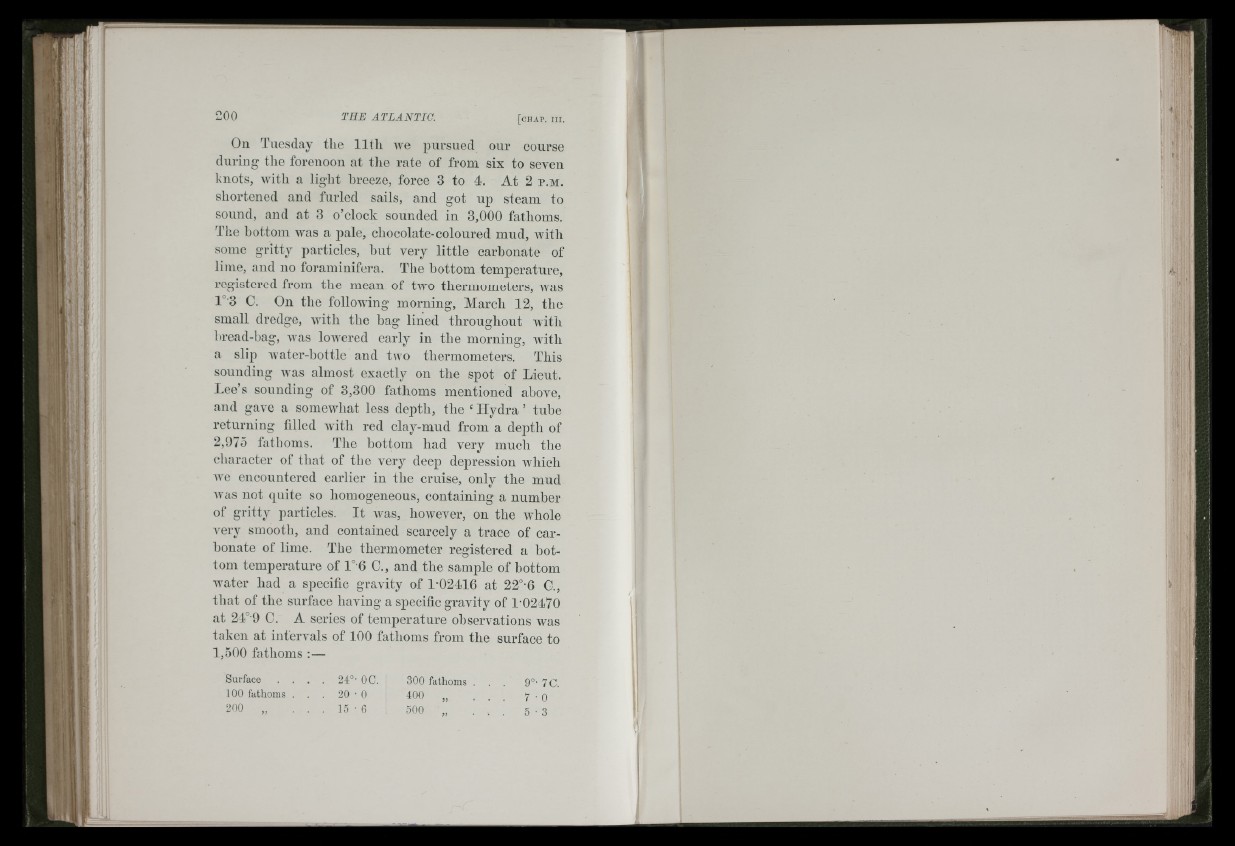
m i
200 T H E A T L A N T I C . [ c h a p . n i .
Olí Tuesday the l l t l i we pursued our course
during the forenoon at tlie rate of from six to seven
knots, with a liglit breeze, force 3 to 4. At 2 p .m.
shortened and furled sails, and got up steam to
sound, and at 3 o’clock sounded in 3,000 fathoms.
The hottom ivas a pale, chocolate-coloured mud, with
some gritty particles, but very little carbonate of
lime, aud no foraminifera. The hottom temperature,
registered from the mean of two thermometers, was
1°'3 C. Ou the following morning, March 12, the
small dredge, with the bag lined throughout witli
hread-bag, ivas lowered early in the morning, Avitti
a slip Avater-hottle and two thermometers. This
sounding Avas almost exactly on the spot of Lieut.
Lee’s sounding of 3,300 fathoms mentioned ahove,
and gave a somewhat less depth, the ‘ Hydra ’ tuhe
returning filled Avith red elay-mud from a depth of
2,975 fatboms. The hottom had very much the
character of that of tbe very deep depression Avhich
Ave encountered earlier in the cruise, only the mud
AA'as not quite so homogeneous, coutaiuing a number
of gritty particles. It Avas, however, on the Avhole
very smooth, aud contained scarcely a trace of carbonate
of lime. The thermometer registered a hottom
temperature of 1° 6 C., and the sample of bottom
water had a specific gravity of 1-02416 at 22°-6 C.,
that of the surface having a specific gravity of 1-02470
at 24°-9 C. A series of temperature ohservations was
taken at intervals of 100 fathoms from the surface to
1,500 fathoms :—
: -;ir
if l ' | ! : *
ii
i iff
Surface . .
100 fathoms .
200 „
24°- OC. 300 fathoms
20 • 0 400 „
1 5 - 6 .500 „
9°- 7C.
7 • 0
5 • 3